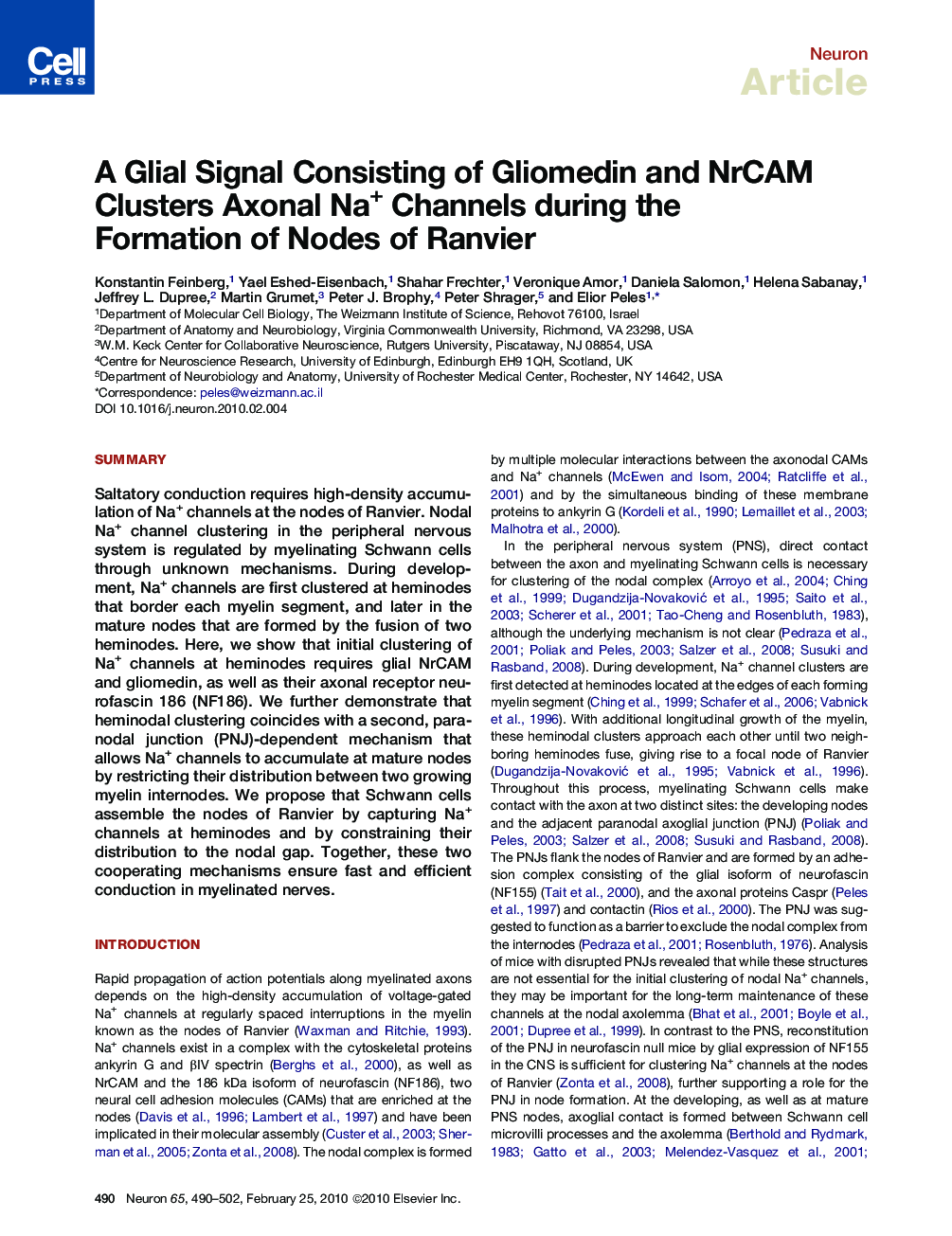| کد مقاله | کد نشریه | سال انتشار | مقاله انگلیسی | نسخه تمام متن |
|---|---|---|---|---|
| 4322651 | 1291722 | 2010 | 13 صفحه PDF | دانلود رایگان |

SummarySaltatory conduction requires high-density accumulation of Na+ channels at the nodes of Ranvier. Nodal Na+ channel clustering in the peripheral nervous system is regulated by myelinating Schwann cells through unknown mechanisms. During development, Na+ channels are first clustered at heminodes that border each myelin segment, and later in the mature nodes that are formed by the fusion of two heminodes. Here, we show that initial clustering of Na+ channels at heminodes requires glial NrCAM and gliomedin, as well as their axonal receptor neurofascin 186 (NF186). We further demonstrate that heminodal clustering coincides with a second, paranodal junction (PNJ)-dependent mechanism that allows Na+ channels to accumulate at mature nodes by restricting their distribution between two growing myelin internodes. We propose that Schwann cells assemble the nodes of Ranvier by capturing Na+ channels at heminodes and by constraining their distribution to the nodal gap. Together, these two cooperating mechanisms ensure fast and efficient conduction in myelinated nerves.
► Two distinct axoglial adhesion systems assemble the nodes of Ranvier
► Initial clustering of Na+ channels at heminodes requires gliomedin, NrCAM and NF186
► The paranodal axoglial junctions constrain Na+ channels between two myelin segments
► Glial NrCAM traps gliomedin on Schwann cell microvilli
Journal: - Volume 65, Issue 4, 25 February 2010, Pages 490–502